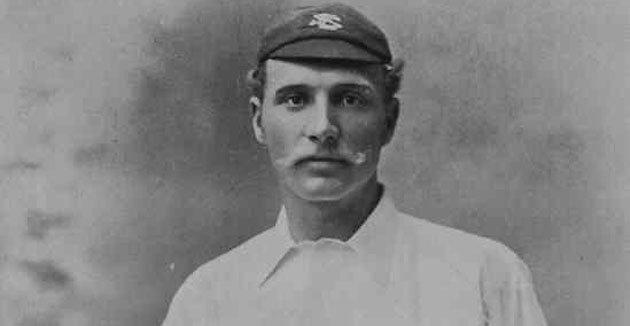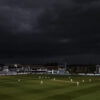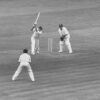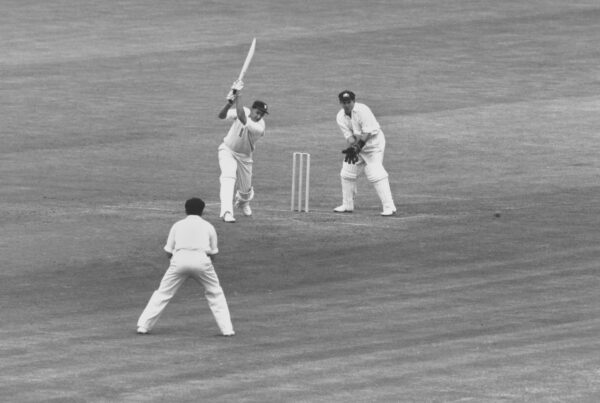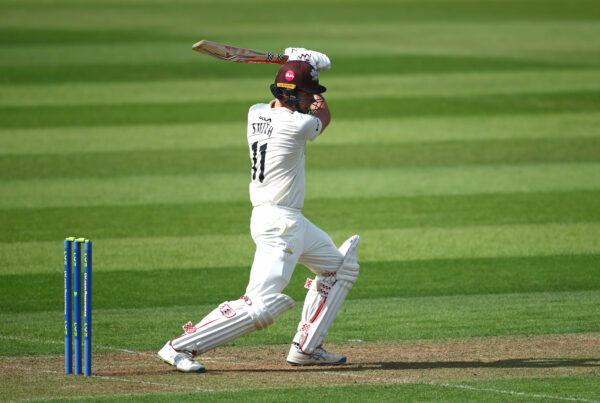While Surrey celebrate – as much as Covid 19 restrictions allow – the final weeks of the club’s 175th anniversary, Richard Spiller looks back to another totemic year.
The County Championship is generally regarded as having started in 1864 – not least by Wisden Cricketers Almanack, which began publishing that year – with Surrey the first champions. But until 1890 the winners were generally agreed by consensus.
There were eight counties involved by then – Gloucestershire, Kent, Lancashire, Middlesex, Nottinghamshire, Surrey, Sussex and Yorkshire – the new official competition seeing a point awarded for each win and one deducted for a defeat. All teams played 14 matches, apart from Sussex and Middlesex (12 apiece).
For Surrey, the run-up augured well. The 1870s had been a distinctly lean decade after the glories before it and at least some of it was blamed on selfish amateurs who picked and chose their games, offering little encouragement to young professionals.
John Shuter’s appointment as captain in 1880 enabled him to build a team who were acclaimed as undisputed champions in 1887 and 1888 and then shared the title with both Nottinghamshire and Lancashire 12 months later.
An unpromising start saw them beaten by the touring Australians in the season-opener and then losing to Nottinghamshire by 108 runs at Trent Bridge.
Yet after that Shuter’s men won nine of their next 11 outings, seven by an innings, only running out of steam at the end of summer when they lost to Yorkshire and Kent.
It meant Surrey won by two points from Lancashire, who had seven victories, to be crowned the official first champions.
Arthur Shrewsbury of Notts was the most prolific player in the country, scoring 1,082 runs, followed by Gloucestershire pair WG Grace and James Cranston, Surrey’s Bobby Abel in fourth place with 704. Walter Read (539), Maurice Read (488), George Lohmann (464) and Bill Lockwood (461) all made important contributions.
Abel, at 32, was in his prime and had been named as one of Wisden’s Cricketers of the Year that spring. The son of a Rotherhithe lamplighter, he had served a long apprenticeship before reaching his peak and was a favourite of the Oval crowd – partly because he stood at just 5ft 4in – who dubbed him ‘The Guv’nor’. Despite persistent problems with his eyesight, he would go on to accrue 33,128 first-class runs and his 74 centuries included making 357 against Somerset in 1899, which remains the county’s highest individual score.
The 1890 season did not run entirely smoothly for Abel, being omitted briefly through poor form in June but returning to his best when he scored 151 against Middlesex at Lord’s in mid-August and then taking the Lancashire attack for 146 at The Oval, both matches being won by an innings.
Yet it was the bowlers who held the key for Surrey that year.
So effective were the opening pair, Lohmann and John Sharpe, that they claimed 113 and 102 wickets respectively – there was a gap of 12 to the next best in the Championship, Yorkshire’s Bobby Peel – while no other Surrey bowler bettered Edward Streatfeild’s 16.
It was hard to keep Lohmann out of the game given he also claimed 26 catches, Abel snapping up 23 while wicketkeeper Harry Wood completed 25 dismissals.
Surrey would go on to win the title for the next two seasons and then add three more before the end of the decade.
In August, the Cricket Council decided to create a new-look competition, introducing a number of new counties, which would see the Championship divided into three divisions, with promotion and relegation and play-offs.
This created a storm and the council was suspended indefinitely, with responsibility for administration passing to MCC.
Funny how old ideas come round again, isn’t it?
Oval Test match
Bowlers dominated again when England took on Australia, their sixth meeting in 11 years on the ground which had seen the first Test in this country.
The hosts claimed their fourth win but, whereas the two previous matches had brought success by an innings, this time they just scraped home in a match completed inside two days on a rain-affected pitch.
England had won the opening match of the series, at Lord’s, the opening day at The Oval seeing 22 wickets fall. Kent seamer Fred Martin became the first player to claim 12 wickets on his Test debut, being one of three new boys in the side. The left-armer claimed 6-50 from 27 overs in Australia’s 92 all out, Surrey’s George Lohmann finishing with 3-34 from 32.2. Harry Trott’s 39 was the highest score.
The tourists immediately removed England skipper WG Grace for a first-ball duck and although Billy Gunn hit 32, Maurice Read’s 19 was next best, the hosts managing a lead of only eight.
Martin and Lohmann both struck before the end of play, Australia spending an uneasy night at 5-2, making only 102 second time round with Trott’s 25 and John Lyons (21) resisting longest. Martin, known as ‘Nutty’, bowled unchanged for 6-52 from 30.2 overs and Lohmann supported well again with 3-32. John Sharpe, another of the debutants, claimed two wickets in the match and was one of four Surrey players involved.
Needing 95, England were shaking at 32-4, Read again shining on his home ground for 35. At 83-4 it looked all over yet Charlie Turner (3-38) and JJ Ferris, whose 5-49 gave him nine wickets in the game, caused a slump of five wickets for 10 runs. It might have been even tighter, Sharpe and wicketkeeper Gregor MacGregor being stranded in mid-pitch after a misunderstanding but Jack Barrett missed an easy run out opportunity which allowed the pair to scamper an overthrow which won the game by two wickets.
That sealed the series and no play was possible in the third match at Old Trafford.
What else happened in 1890?
The City & South London Railway was opened in the capital, the first deep level underground line in the world, running from King William Street in the City to Stockwell with a stop at The Oval.
The Forth Bridge, carrying trains between England and Scotland, was opened by the Prince of Wales. It measured more than two and a half miles and they are still painting it now.
Great Britain, with Lord Salisbury filling the roles of both Prime Minister and Foreign Secretary, extended its massive empire by acquiring two more colonies in Africa after delivering an ultimatum to Portugal.
Otto von Bismarck, Germany’s ‘Iron Chancellor’ resigned after 19 years dominating European affairs, pushed out by Kaiser Wilhelm II.
One-time South London resident Vincent van Gogh shot himself, dying 30 hours later, his final words: “The sadness will live forever”.
The Wounded Knee Massacre in South Dakota, where the US Cavalry opened fire on Lakota Sioux, killed thousands of unarmed men, women and children.
Battersea Bridge was opened, making it easier for Londoners to travel across the River Thames.
Preston North End retained the Football League title while the FA Cup final, played at The Oval, saw Blackburn Rovers beat Sheffield Wednesday win 6-1.
The Baseball Ground in Derby was opened, home of one of the eight teams in the new National Baseball League, although it became better known as the home of Derby County FC.
